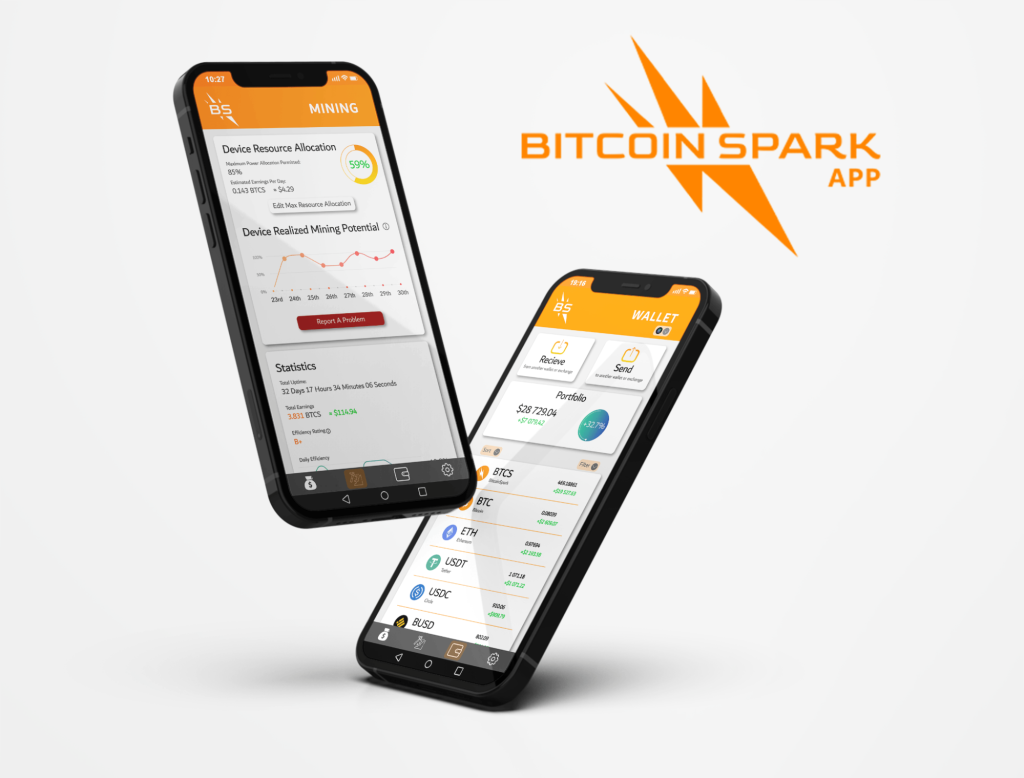Bitcoin Spark and Bitcoin Cash are BTC forks offering unique perspectives on blockchain technology and the general cryptocurrency outlook. Their emergence derives inspiration from the desire to enhance scalability, improve speed, and ensure accessibility. As the two pursue their niches, they redefine digital transactions and decentralized finance for a profitable future.
Contents [hide]
What is a Bitcoin Fork?
A Bitcoin fork is a split or update to the underlying code of the Bitcoin blockchain, resulting in two separate branches with distinct features, rules, and values. This division results in the original Bitcoin and the new version derived from the modification. BCH and BTCS, often referred to as Bitcoin alternatives, retained the same tokenomics as BTC regarding maximum coin supply. Some earlier forks, like Litecoin increased the coin supply by four times to 84M. Bitcoin forks emerge to improve the Bitcoin network by enhancing its features, scalability, and security, or address pertinent issues often causing disagreements. The subject feature or solution can be contentious, driven by disagreements within the community regarding the project’s direction. Bitcoin forks have yielded various alternate cryptocurrencies (altcoins) that have gained a following due to varying use cases.
What is Bitcoin Cash?
Bitcoin Cash is a hard fork splitting from the original Bitcoin. The split happened in 2017, culminating in a change of rules. Bitcoin Cash introduced larger blocks for transactions, enabling more TPS. Bitcoin Cash operates like Bitcoin and is an open-source, decentralized digital ledger using proof of work. Miners validate and add transactions to the blockchain by solving equations and, as a reward for their efforts, receive Bitcoin Cash tokens (BCH). Like Bitcoin, Bitcoin Cash will have a maximum of 21 million coins.
Bitcoin Spark (BTCS): Self-sustainability and Profitability
Bitcoin Spark (BTCS) is at the forefront of innovation, aiming for self-sustainability and profitability within the cryptocurrency landscape. It employs a unique Proof-of-Process (PoP) mechanism, which optimizes computational capabilities in mining devices. This approach combines PoS and PoW to ensure a sustainable and equitable mining experience while encouraging a collaborative mining community. BTCS incentivizes validators and miners by encouraging them to contribute processing power for computational tasks on the network. This sustainable block confirmation process operates with relatively low energy consumption, enhancing network security and reliability. The reward system within BTCS is thoughtfully crafted by factoring in processing power and valuing the stake invested in achieving consensus. BTCS prevents undue concentration of control over the network by strategically moderating rewards and promoting fairness and decentralization.

BTCS emphasizes revenue diversification and self-sustainability within its mining experience. It integrates rental options and advertising opportunities, enabling users to maximize their mining rewards and create additional revenue streams for long-term sustainability.
The specialized Bitcoin Spark mining application provides a straightforward entry point for users into the BTCS ecosystem. Unlike traditional mining, which demands expensive hardware and technical expertise, this application allows users to mine BTCS using existing devices, making mining accessible to a broader audience.
BTCS adopts a multi-layered blockchain structure, enhancing security, scalability, and functionality. Each layer is purpose-driven and contributes to the overall efficiency and effectiveness of the network, reinforcing the foundation of a robust and sustainable cryptocurrency ecosystem. BTCS has undergone audits and KYC processes for transparency and regulatory purposes. Bitcoin Spark has a running ICO in its seventh phase at $3.00 per BTCS token. Investors are incentivized with a 7% bonus to increase their BTCS holdings.
Are Bitcoin Forks Profitable?
Bitcoin forks arise from the desire to improve network operations and ultimately the platform’s profitability. Driven by new technologies, a clear roadmap, and an experienced team, BTC alternatives are inclined to deliver profits. Bitcoin fork’s profitability largely depends on the project’s adoption, community support, development activity, and the market demand. The project’s utility solutions are paramount for its adoption. If it gains traction and attracts a significant user base, the demand for the new cryptocurrency may increase, potentially driving up its price and making it profitable for early adopters. BTC forks’ features and improvements over the original Bitcoin determine their profitability. Features addressing specific market needs, like the BTCS PoP mechanism that addresses mining accessibility, make the project more valuable and potentially profitable.
Investing early in the project’s ICO guarantees high returns as pricing is affordable during presale. When the project launches and it explodes, its price might soar, enriching the early adopters. Bitcoin Spark’s ICO forecasts a 357% ROI with a launch price of $10.
Learn More on BTCS and ICO:
Website: https://bitcoinspark.org/
Buy BTCS: https://network.bitcoinspark.org/register
Disclosure: This is a sponsored press release. Please do your research before buying any cryptocurrency or investing in any projects. Read the full disclosure here.
Photo by Dmytro Demidko on Unsplash




